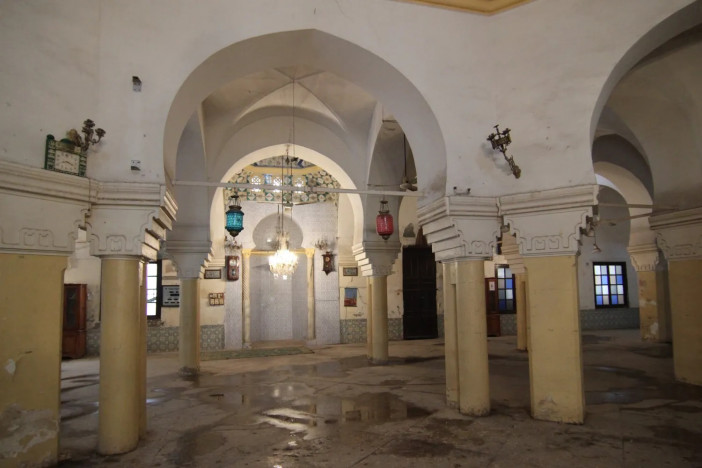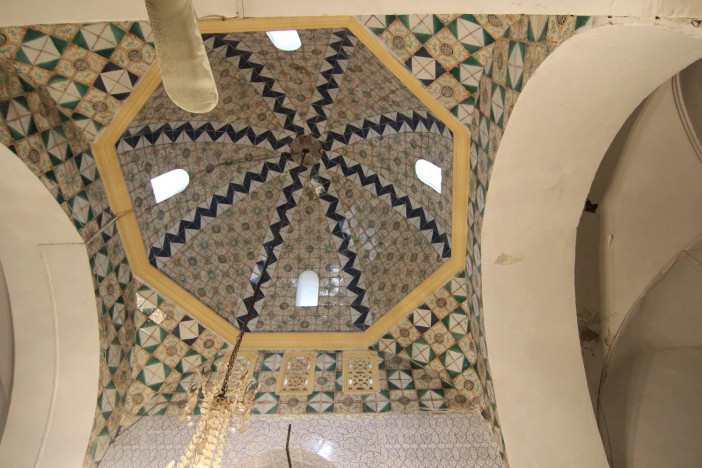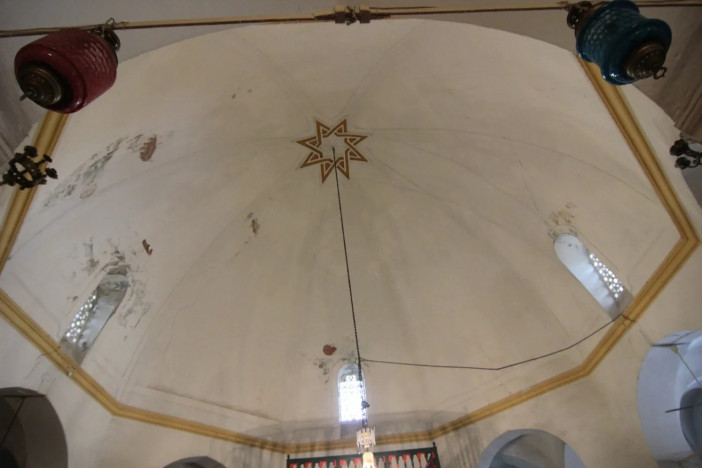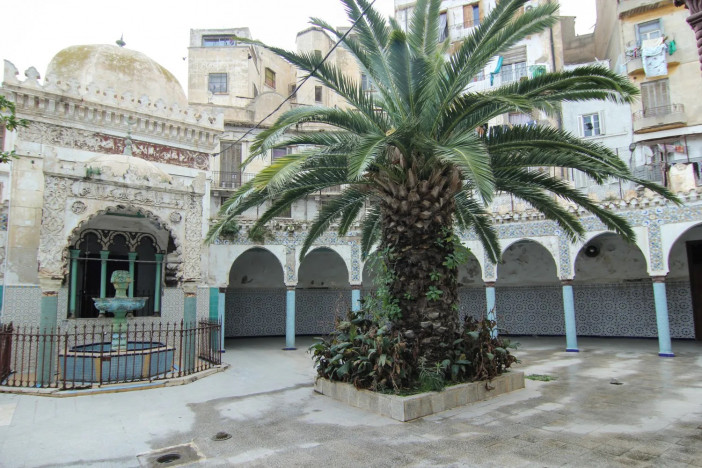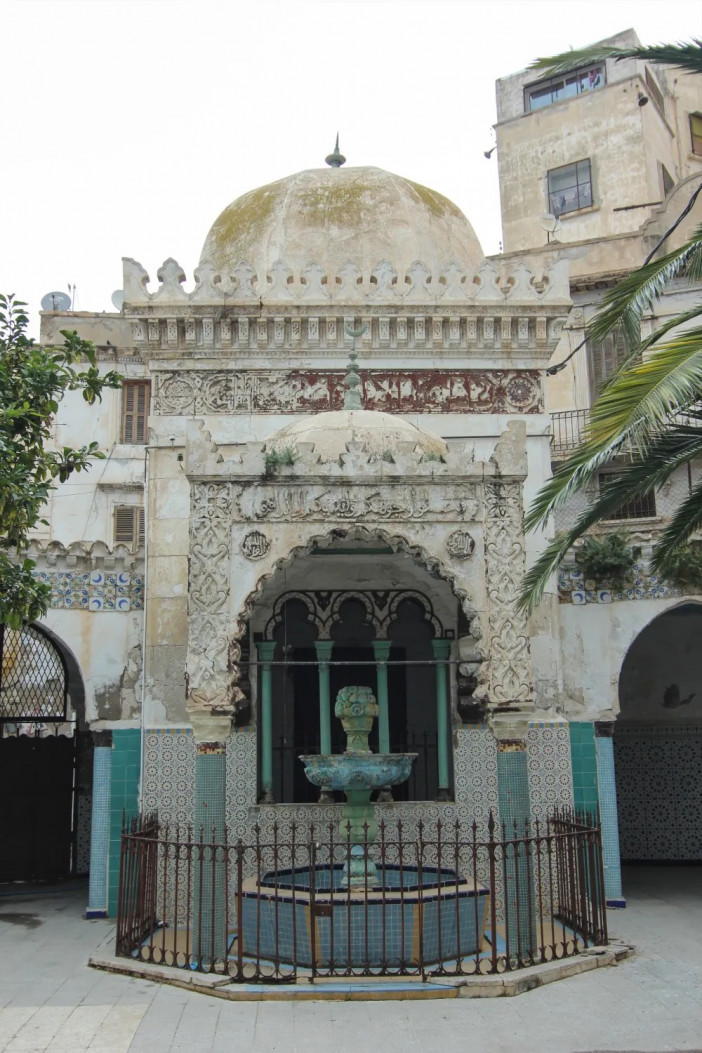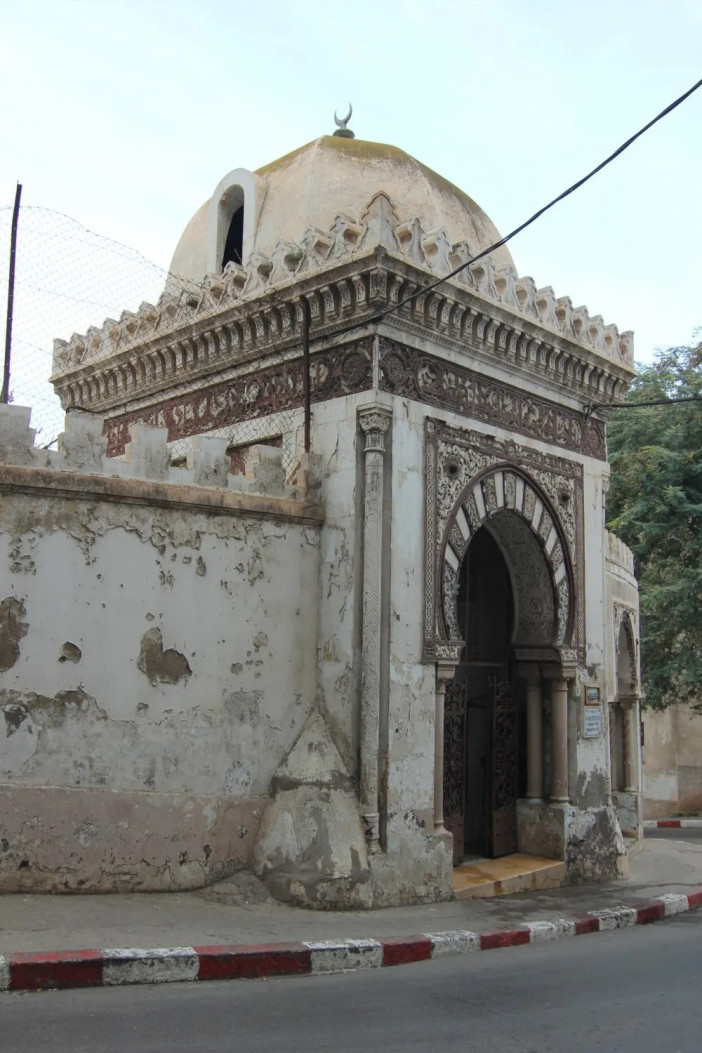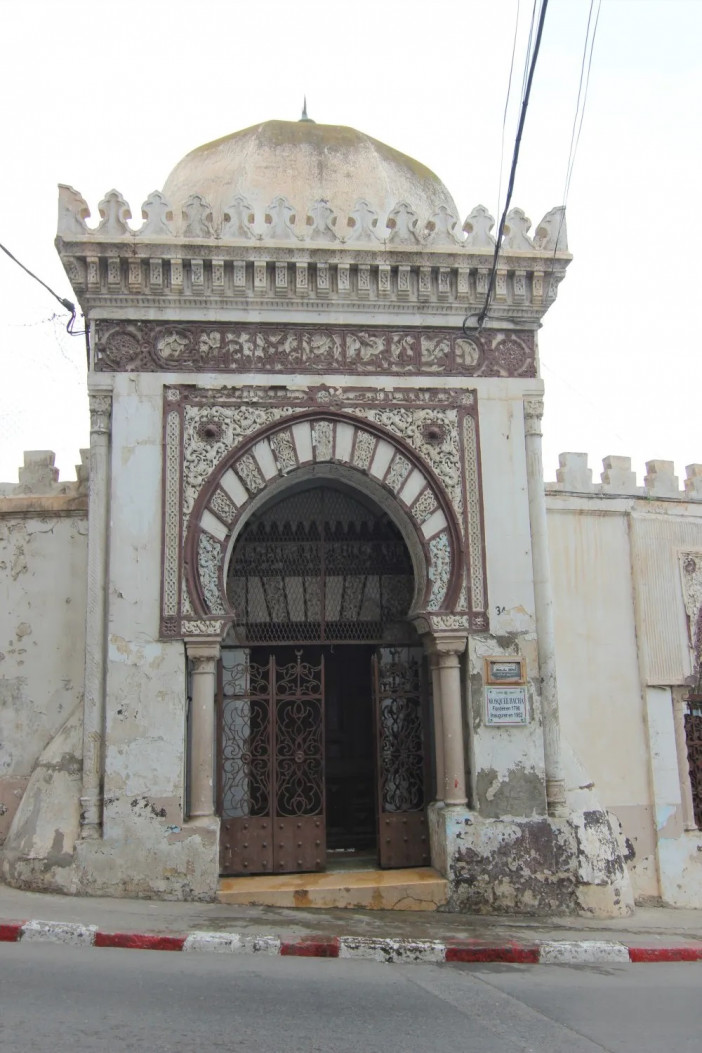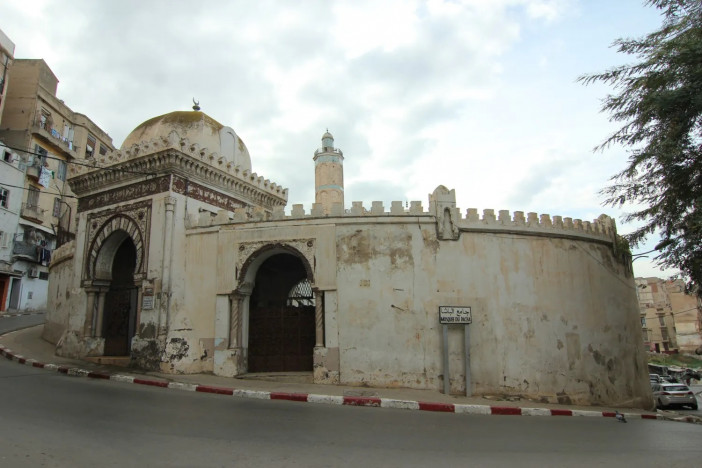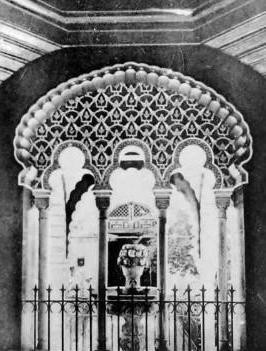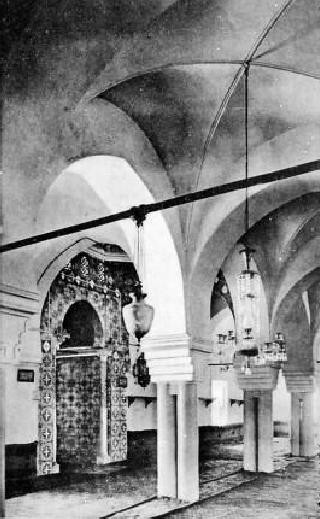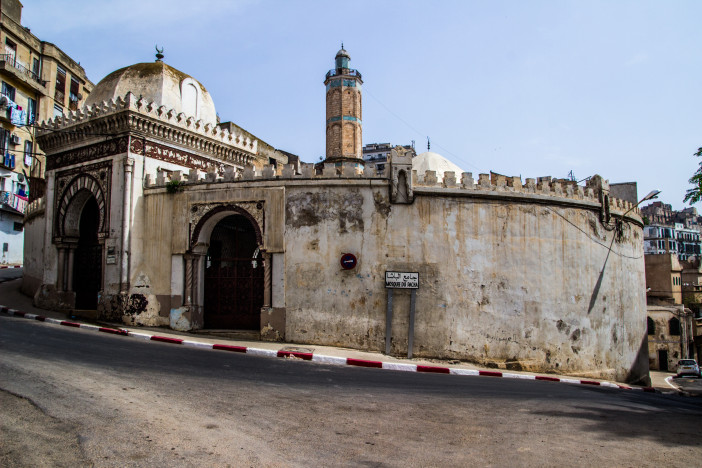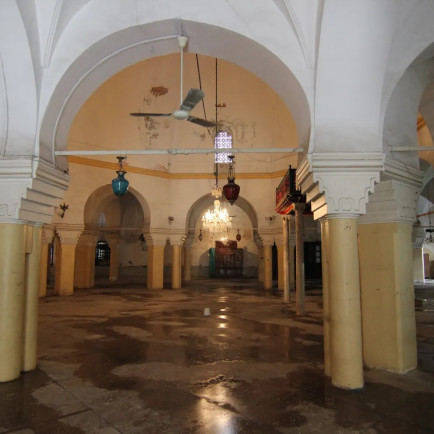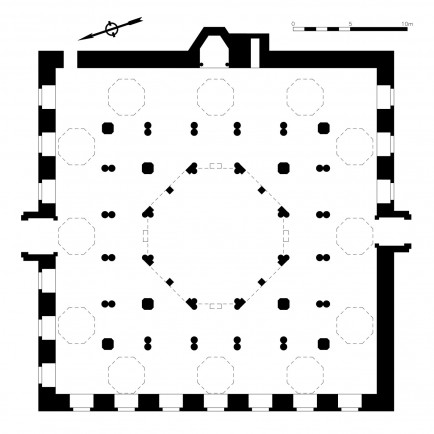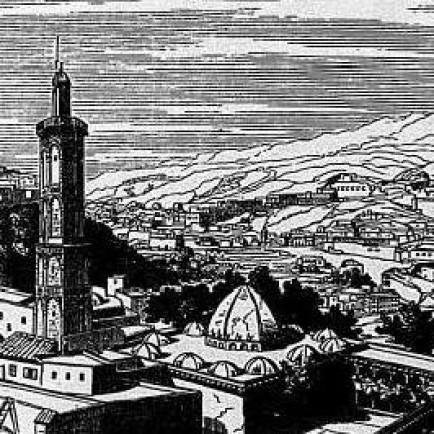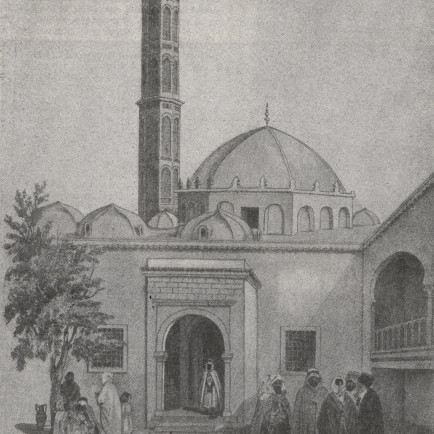Hassan Basha Mosque
History
On the direction of the pasha Baba Hassan of Algiers, who funded its construction with the proceeds from the release of Christian prisoners, the Hassan Pacha Mosque was built in Oran in 1796, during the rule of the bey Mohamed El-Kébir. It is situated in the Sidi El-Houari neighborhood on the right bank of the oued Rhi, which is now covered.
Urban and Architectural
The mosque's exterior wall hugs the incline of the street that surrounds it. The entrance porch, which has a dome atop it, was constructed in 1864 under the direction of architect Viala de Sorbier, who also worked hard on the medieval structures in Tlemcen and Nedroma. In fact, the neo-Moorish design of this porch stands in stark contrast to the Ottoman design of the rest of the structure.
The entrance courtyard is adorned with a fountain in the center that is covered by a domed pavilion, and it is bordered by arches supported by little columns. The layout of the prayer room is nearly square. It has two side doors for entry, and a 12-meter-diameter octagonal dome atop it. Twelve arches support the central dome, which is encircled by nine cupolas that are set around the prayer hall's sides and alternate with groined vaults. In the prayer hall, there are square pillars with chamfered angles in addition to the cylindrical columns that surround the central dome. Most of the capitals are adorned with a geometric design of palm leaves.
The prayer hall's southeast corner is where the minaret is located. Its base is octagonal. It has two storeys, divided by a cornice, with a lantern on top. Even though the upper level is narrower than the lower level, it is equally decorated: two superimposed interlocking lobed arches are topped with a frieze made of ceramic tiles. An eight-sided cupola is located atop the ceramic tile-covered octagonal lantern. According to a long-standing urban legend in Oran, the base of a minaret is as deep as it is tall.
Description
During the French conquest of Algeria, the mosque was occupied by French troops who were billeted there. The structure was converted again into a mosque in 1835 and refurbished three decades later. The mosque was designated as a historic monument in 1952. It has been permanently closed to the general public since 2010.
References
https://www.archnet.org/sites/6350
https://fr.wikipedia.org/wiki/Mosqu%C3%A9e_de_Hassan_Pacha
https://www.aljazaer.com/mosquee-du-pacha-oran/
Details
Location
P83X+XWP Pacha Mosque, Boutkhil, Oran, Algeria
Worshippers
1050
Owners
Baba Hassane Pacha
Architect Name
Year of Build
1797
Area
2100
Drawings
Map
History
On the direction of the pasha Baba Hassan of Algiers, who funded its construction with the proceeds from the release of Christian prisoners, the Hassan Pacha Mosque was built in Oran in 1796, during the rule of the bey Mohamed El-Kébir. It is situated in the Sidi El-Houari neighborhood on the right bank of the oued Rhi, which is now covered.
Urban and Architectural
The mosque's exterior wall hugs the incline of the street that surrounds it. The entrance porch, which has a dome atop it, was constructed in 1864 under the direction of architect Viala de Sorbier, who also worked hard on the medieval structures in Tlemcen and Nedroma. In fact, the neo-Moorish design of this porch stands in stark contrast to the Ottoman design of the rest of the structure.
The entrance courtyard is adorned with a fountain in the center that is covered by a domed pavilion, and it is bordered by arches supported by little columns. The layout of the prayer room is nearly square. It has two side doors for entry, and a 12-meter-diameter octagonal dome atop it. Twelve arches support the central dome, which is encircled by nine cupolas that are set around the prayer hall's sides and alternate with groined vaults. In the prayer hall, there are square pillars with chamfered angles in addition to the cylindrical columns that surround the central dome. Most of the capitals are adorned with a geometric design of palm leaves.
The prayer hall's southeast corner is where the minaret is located. Its base is octagonal. It has two storeys, divided by a cornice, with a lantern on top. Even though the upper level is narrower than the lower level, it is equally decorated: two superimposed interlocking lobed arches are topped with a frieze made of ceramic tiles. An eight-sided cupola is located atop the ceramic tile-covered octagonal lantern. According to a long-standing urban legend in Oran, the base of a minaret is as deep as it is tall.
Description
During the French conquest of Algeria, the mosque was occupied by French troops who were billeted there. The structure was converted again into a mosque in 1835 and refurbished three decades later. The mosque was designated as a historic monument in 1952. It has been permanently closed to the general public since 2010.


